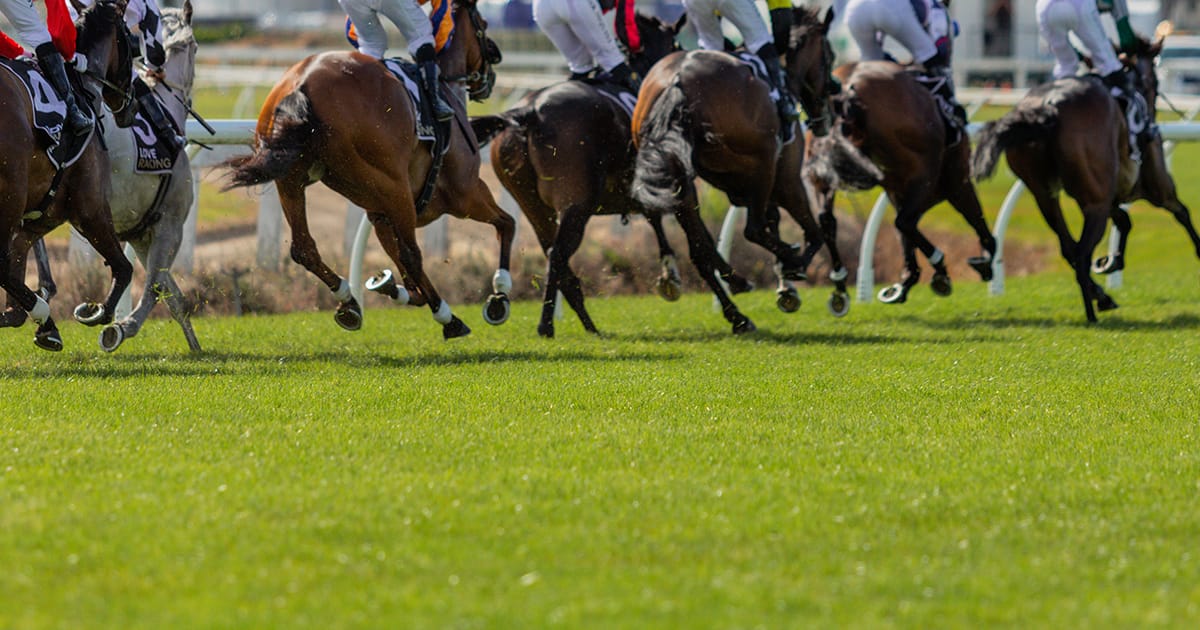We recently met with experienced racetrack veterinarians’ that have introduced Arthramid into their management of subchondral bone disease in racing Thoroughbreds’.
Introduction:
Subchondral bone is composed of a subchondral bone plate and underlying trabecular bone, which together act to dampen forces that are transmitted through the joint. Acute fracture or fragmentation of subchondral bone does occur but is rare as a cause of lameness in equine athletes(1). What we are beginning to understand is that chronic fatigue injury is much more common.
Chronic fatigue injury is a term used to characterize the pathologic processes that start at molecular and biochemical levels, leading to histologic evidence of tissue damage and ultimately tissue failure that results in clinical signs. Chronic fatigue injuries therefore result from cyclic loading of tissues below the biomechanical threshold of tissue failure. This can then lead to a progression of areas of microdamage, areas of tissue weakness, or maladaptation of the tissues resulting in chronic progressive changes to the material properties of the tissue involved, all ultimately leading to pain or injury.
Although the clinical manifestations of chronic fatigue injury are consistent in nature, they can differ between breeds, use and age. It is now understood that chronic fatigue injury consistently occurs in the subchondral bone of equine athletes, and there is evidence to suggest that it occurs in the articular cartilage and, is likely worsened by degradation processes associated with synovitis(2).
Background:
Over 60 racing Thoroughbreds with subchondral bone disease were diagnosed and managed by a single veterinary clinic in Australia over a two-year time period. Horses ranged in age from 3 to 5 years.
These cases all presented with poor performance, were often aggressive in their work, and may have had episodes of EIPH on routine post gallop scopes raising the question whether it was pain related. Typically, lameness was bilateral, and even quadruple with a shortened and shuffling gait. The horses were consistently reported to disunite at the canter, and they may or may not react to flexion or have joint effusion but would often plait behind and have speedy cuts.
Diagnosis:
Regional analgesia of the palmar/ plantar metacarpal/ metatarsal nerves (2 to 3 mls of 100mg/ml mepivacaine hydrochloride) at the level of the distal canon was performed by the examining veterinarian. They found cases easier to diagnose under ridden work by performing regional analgesia and sending the rider back out to trot/ canter. There was a significant improvement in the gait reported by the track rider and observed by the examining veterinarian.
Radiographic examination included latero-medial, lateral- oblique, medial- oblique, dorso-palmar/ plantar views, flexed DP, 1250 DP, and flexed DP (skyline) views. Changes seen included condylar sclerosis and flattening of the palmar/ plantar condyles. Occasionally a central area of lucency could be observed, most likely subchondral bone collapse. Generally, though radiographs were unreliable for a specific diagnosis.
Scintigraphy remained the diagnostic modality of choice showing moderate to marked increase in radiopharmaceutical uptake in the palmar/ plantar condyles. MRI, CT and PET, whilst excellent for further quantifying the diagnosis were difficult to achieve from the perspective of costs and gaining owner compliance.
Treatment:
Initially the horses were spelled for as long as the client permitted or was able to allow, typically 3-4 months. In the veterinarians’ opinion this resulted in the best outcomes. However, oftentimes horses may only get 5-6 weeks due to the racing calendar and trainer/ owner expectations.
Arthramid was administered bilateral/quadruple to the metacarpo/ tarso phalangeal joint on resumption of training at a dose rate of 2ml (50mg) per joint.
Management Post Treatment:
The horses were given 2 to 4 days rest followed by 2 to 3 weeks of ‘easy’ exercise– walking or swimming. The best outcomes seemed to be achieved when they were not galloped for at least 2 to 3 weeks after treatment with Arthramid Vet.
Outcome:
Anecdotally this form of treatment has resulted in excellent outcomes for this practice, as measured by a return to previous performance and owner/ trainer satisfaction. The practice has also seen a reduction in the use of corticosteroids, and incidentally a decrease in post galloping EIPH.
The treating veterinarian also reported a subjective improvement in synovial fluid viscosity seen in horses that have been re-treated over multiple preparations and tends to now treat the joints as early as possible in the disease process rather than waiting until the joint is more severely inflamed.
Discussion:
Improved outcomes with the use of Arthramid are possibly two-fold. Firstly, due to its augmentation effects on the synovium and capsule, and secondly the subsequent reduction in synovitis as a result.
It is known that with chronic, repetitive injury or chronic inflammation, the synovial intima can become modified and the subintima fibrotic. The joint capsule will heal by granulation tissue formation and may become fibrotic in an unpredictable fashion, therefore changing the joint mechanics. A classic example of this is the dorsal aspect of the fetlock joint where the synovial membrane and joint capsule become oedematous and fibroplastic with associated articular cartilage damage in that area (3). ArthramidVet’s ability to augment the capsule and improve its load transfer capacity may as a result lessen the impact of shear forces on the subchondral bone plate itself.
Secondly, the significance of synovitis in the pathogenesis of equine OA is now well recognised. The degradative processes of equine OA do not only affect the articular cartilage but also involve the entire joint, including the sub-chondral bone, ligaments, capsule, synovial membrane, and periarticular tissues. ArthramidVet’s ability to reduce synovitis and improve the nature of the joint fluid may therefore further aid in a reduction in the reoccurrence of clinical signs associated with secondary OA associated with sub-chondral bone disease.
Clinical Report on ArthramidVet. Vol 1, Issue 1. Oct, 2020
Dr Jason Lowe BVSc, CertEP.


